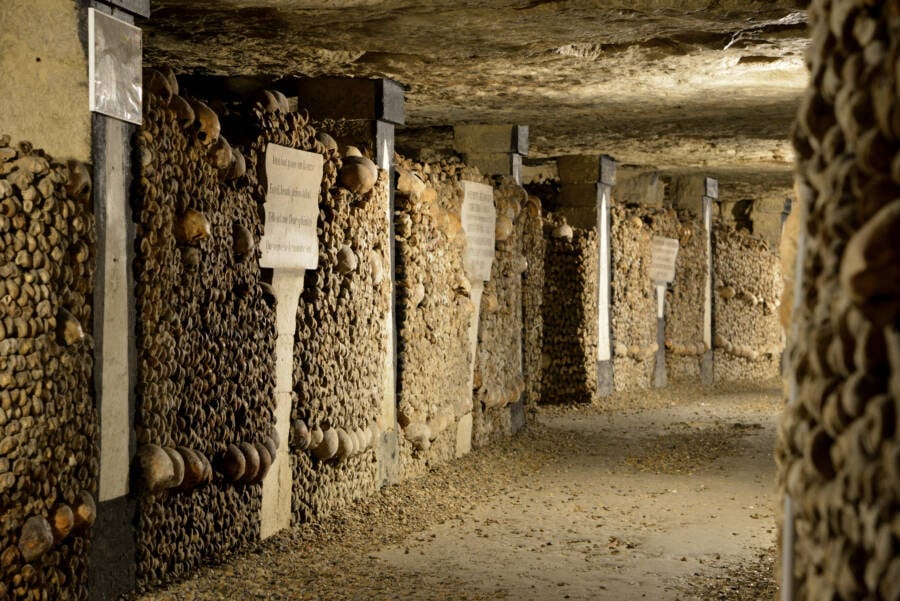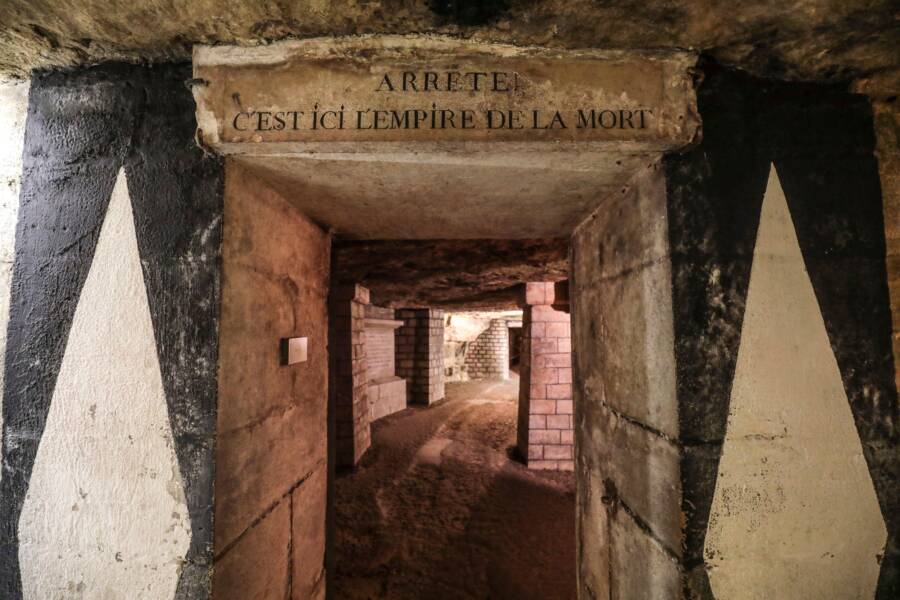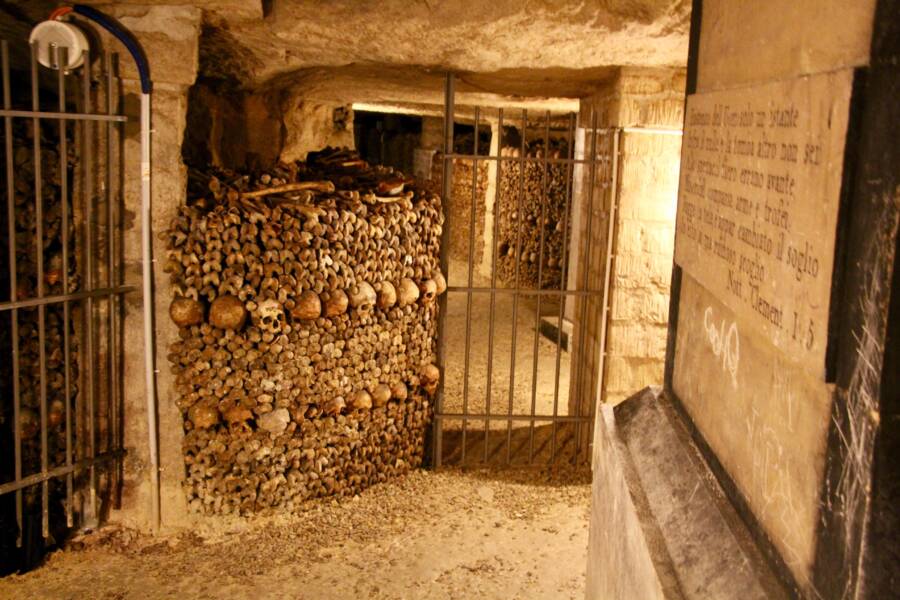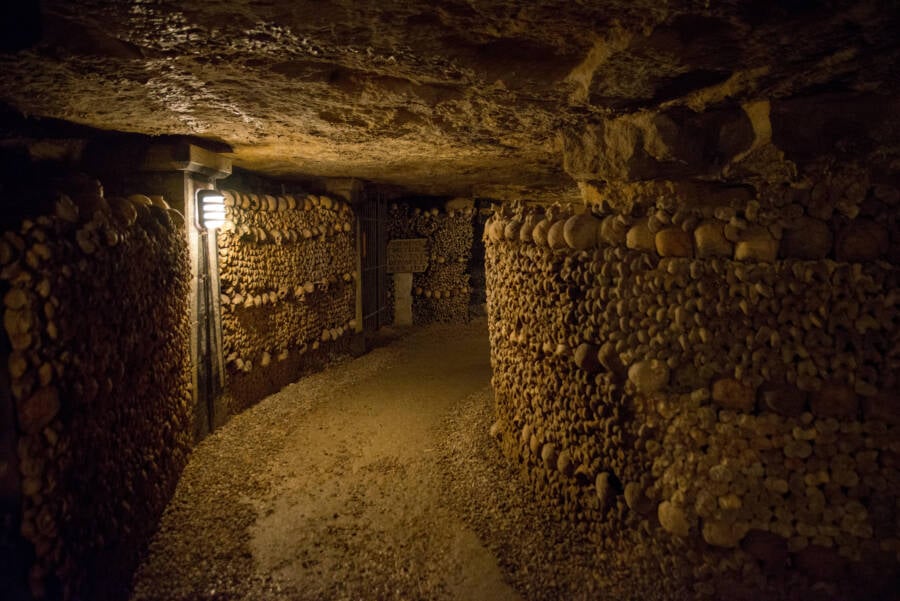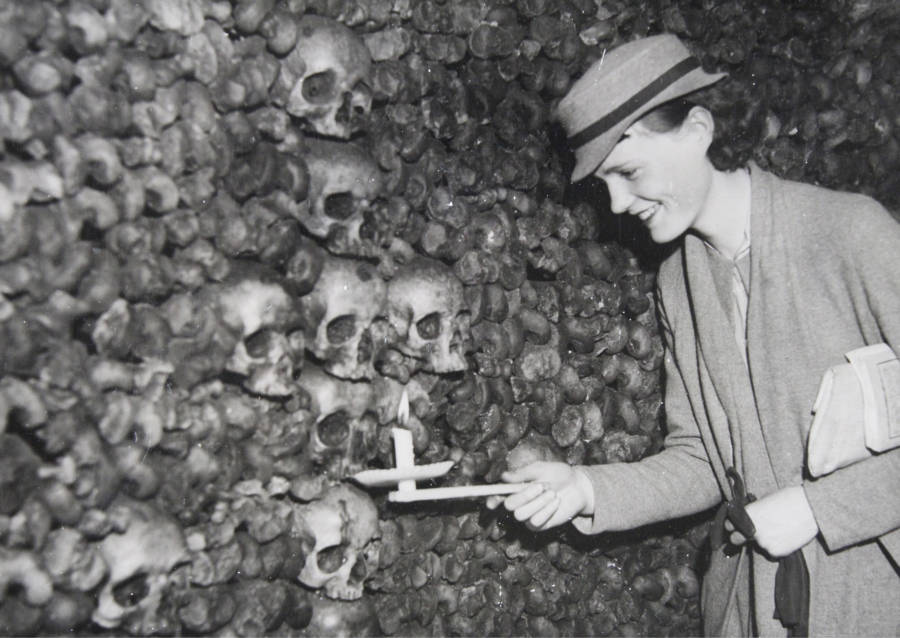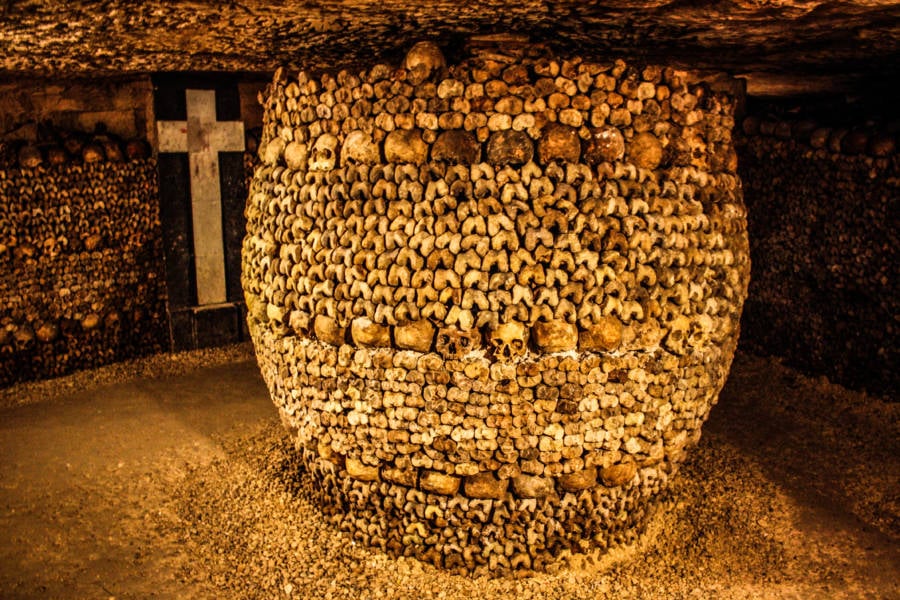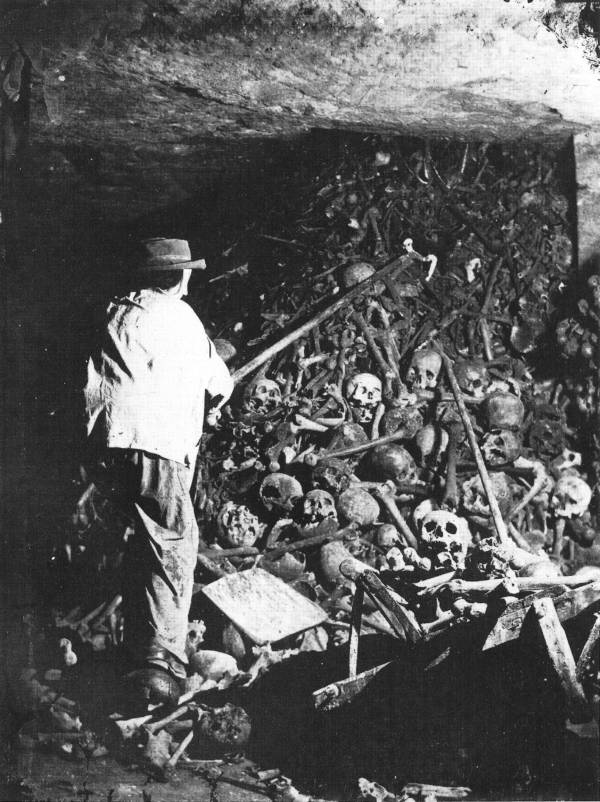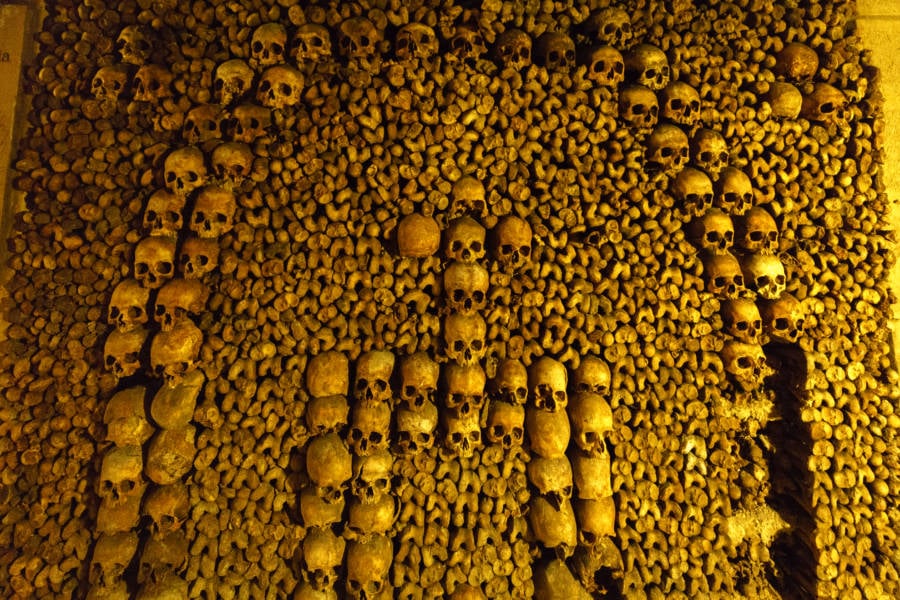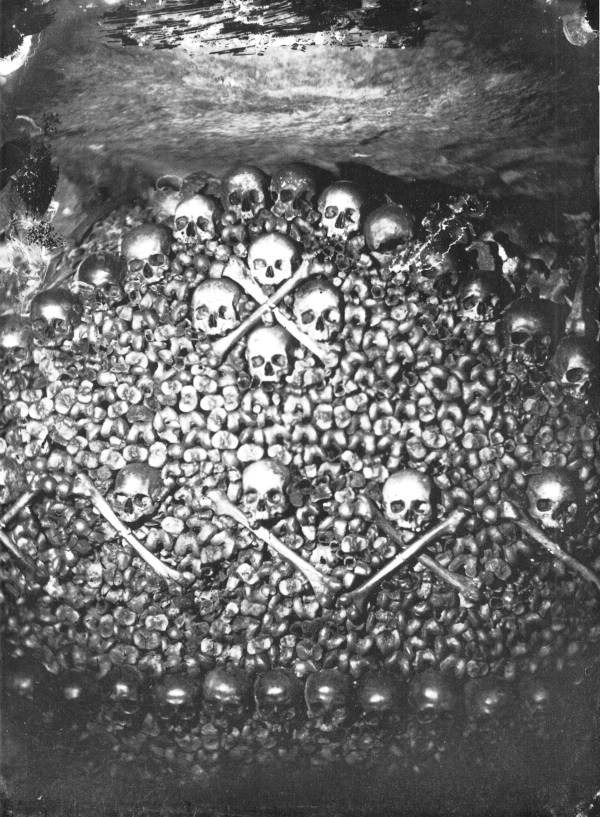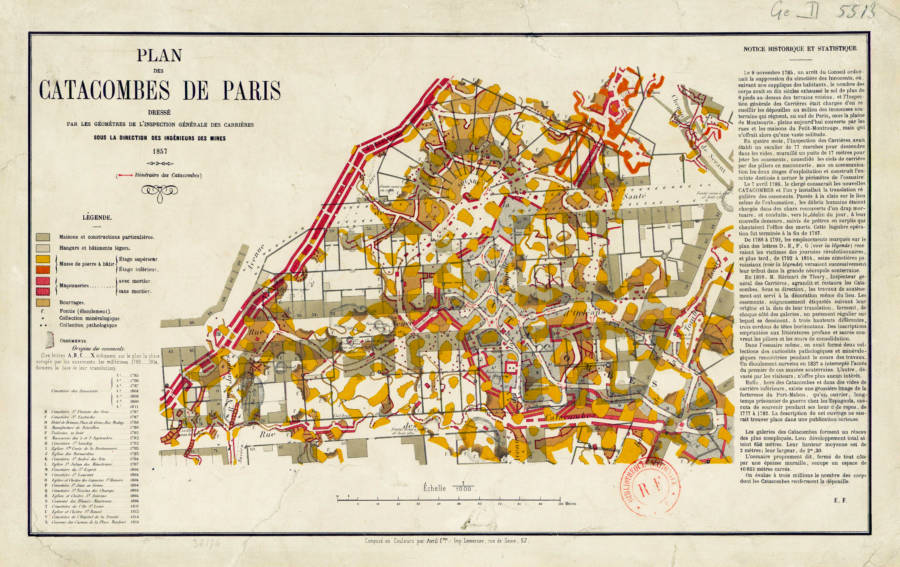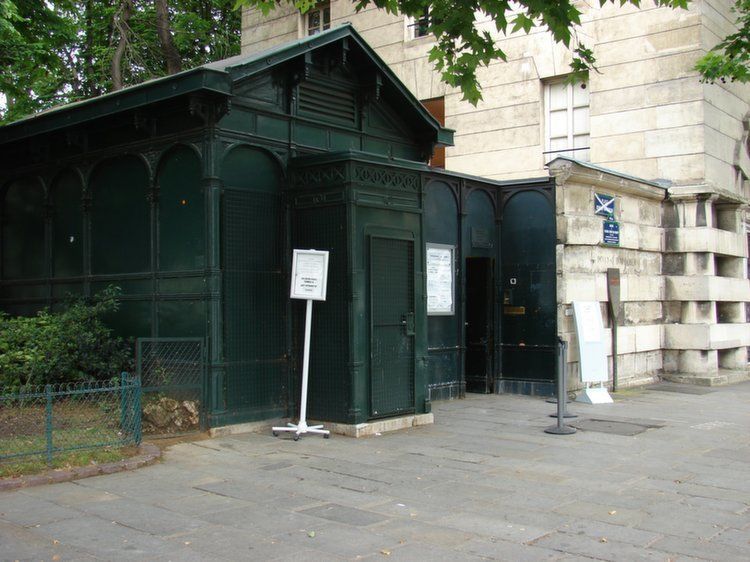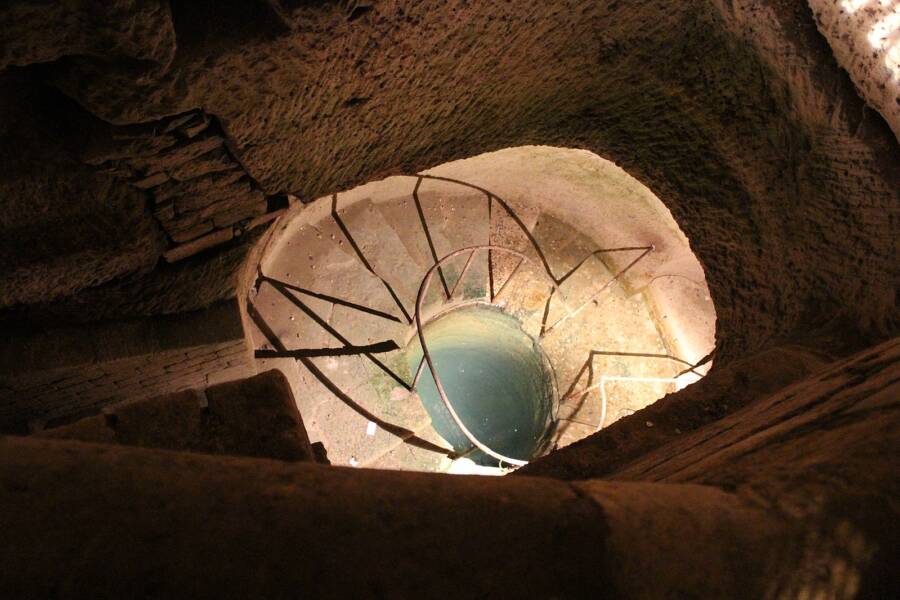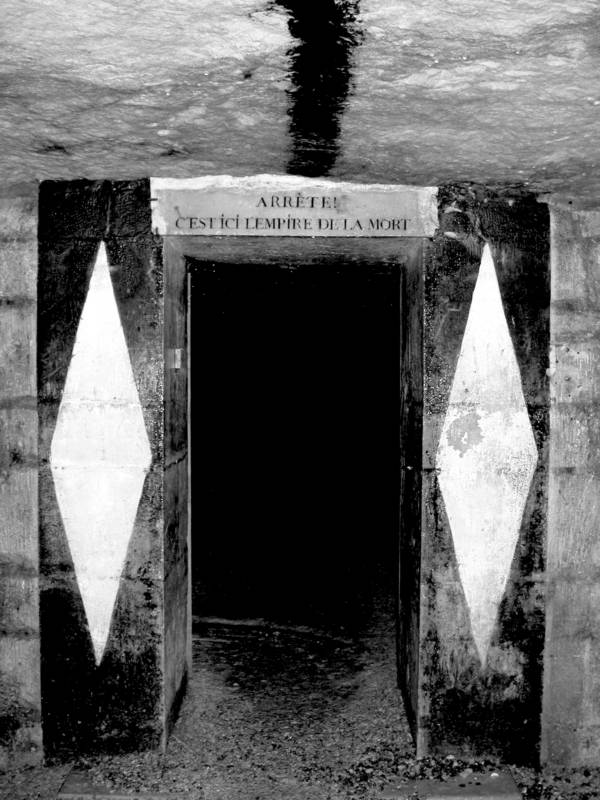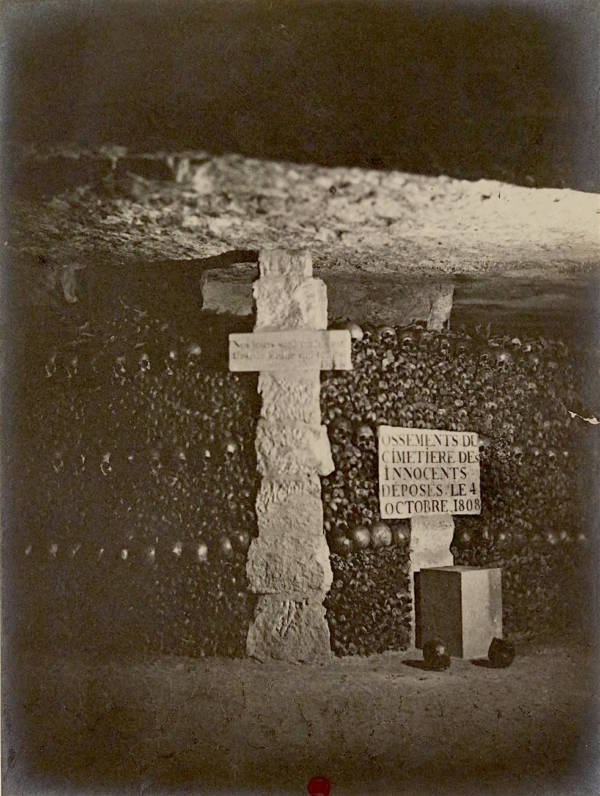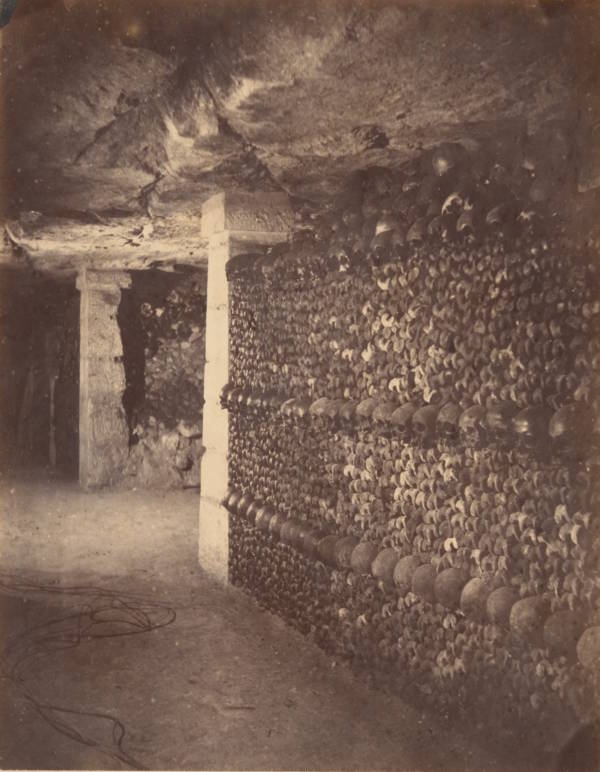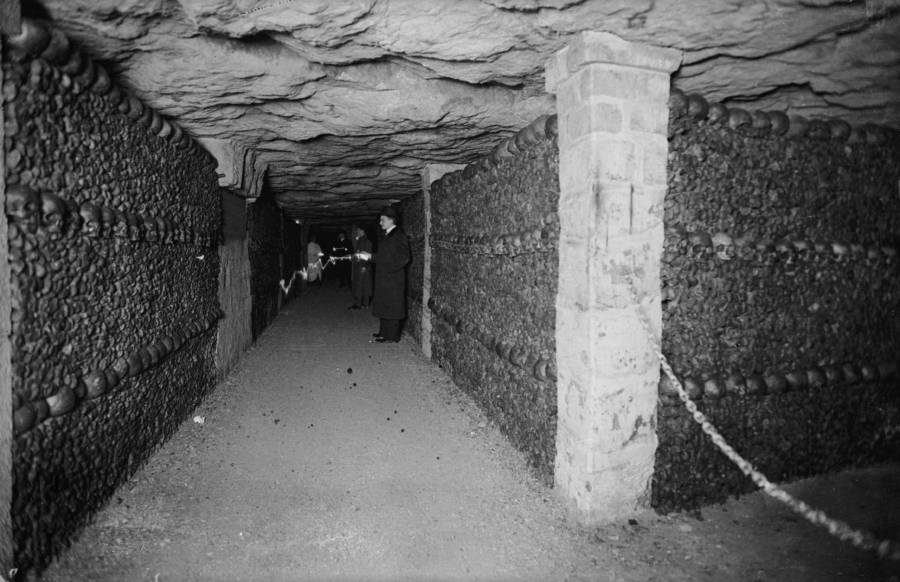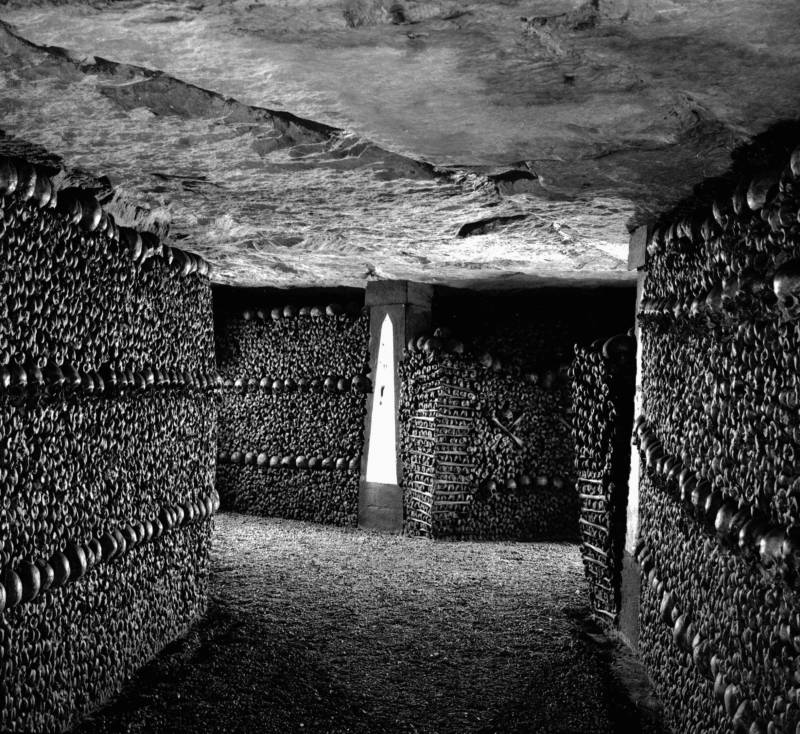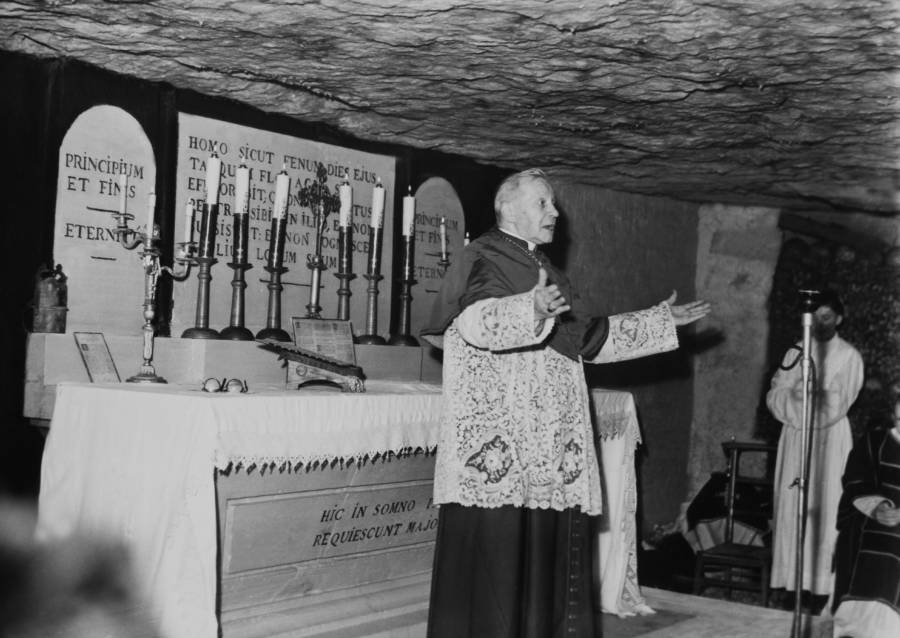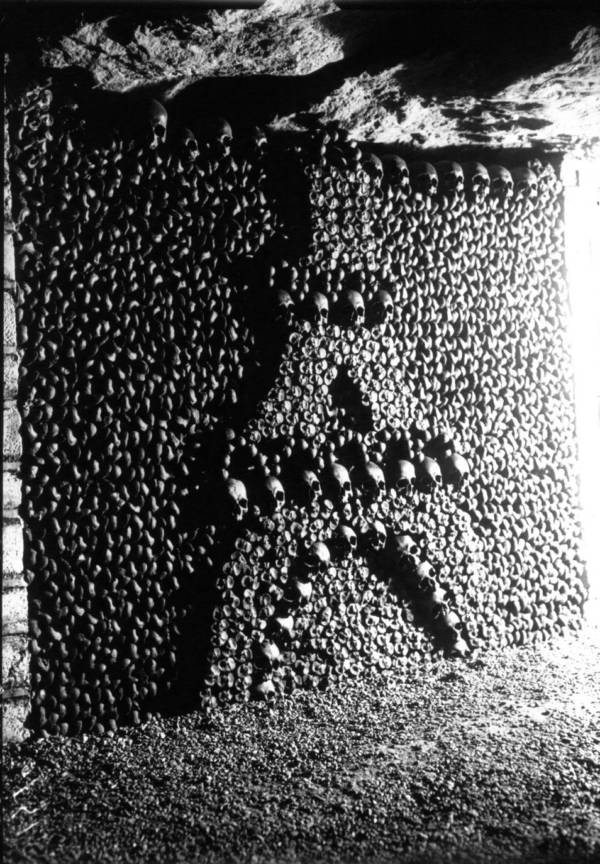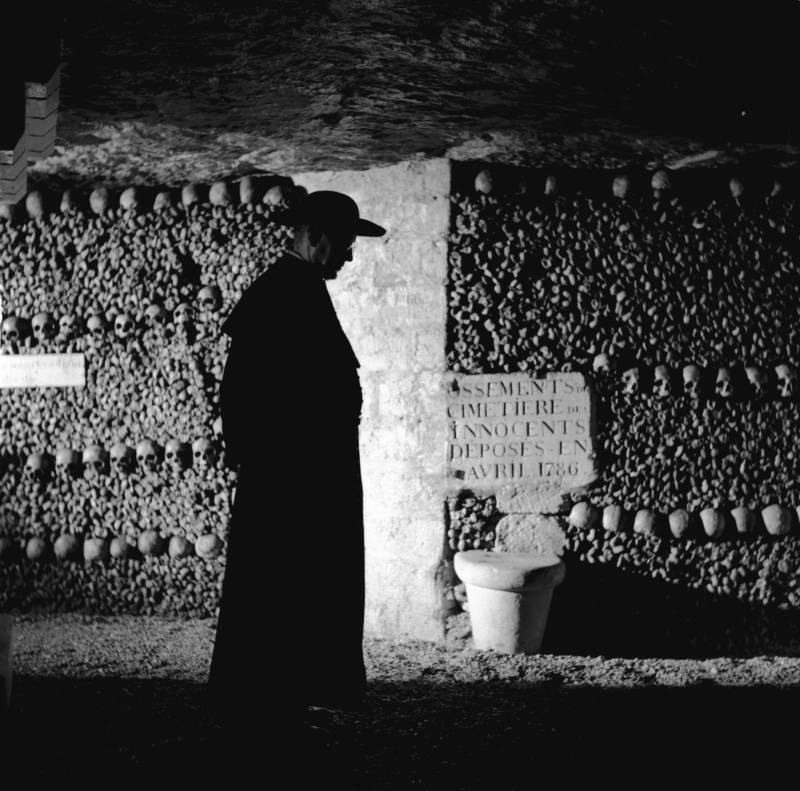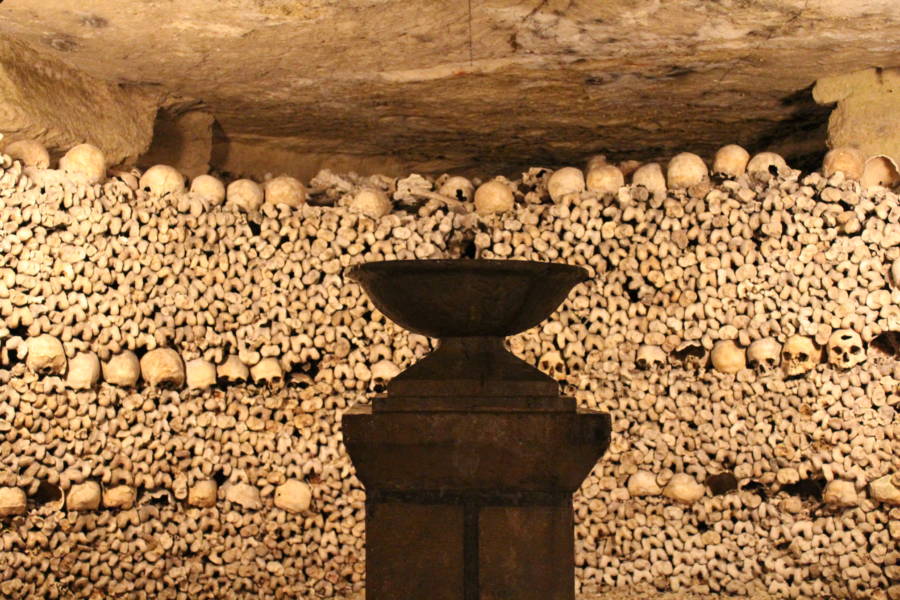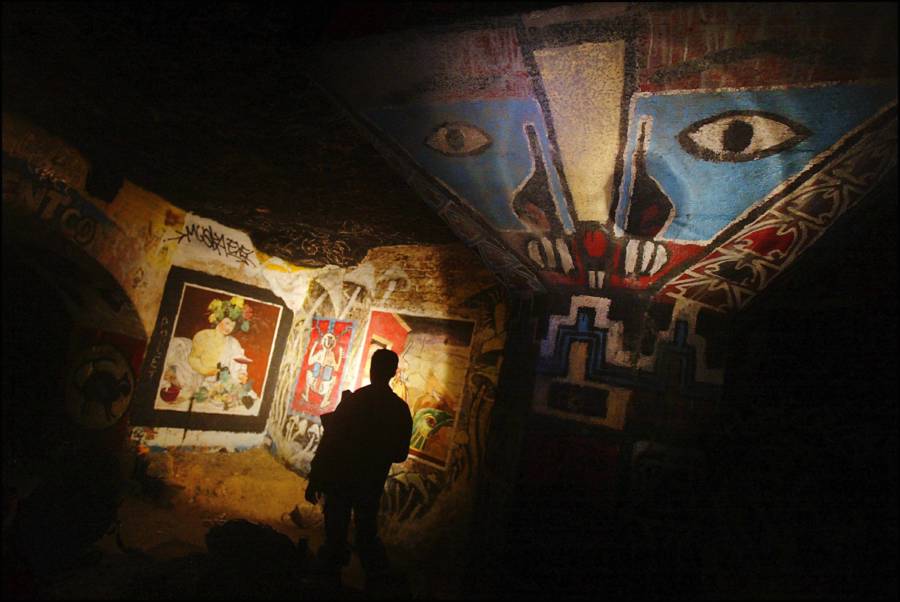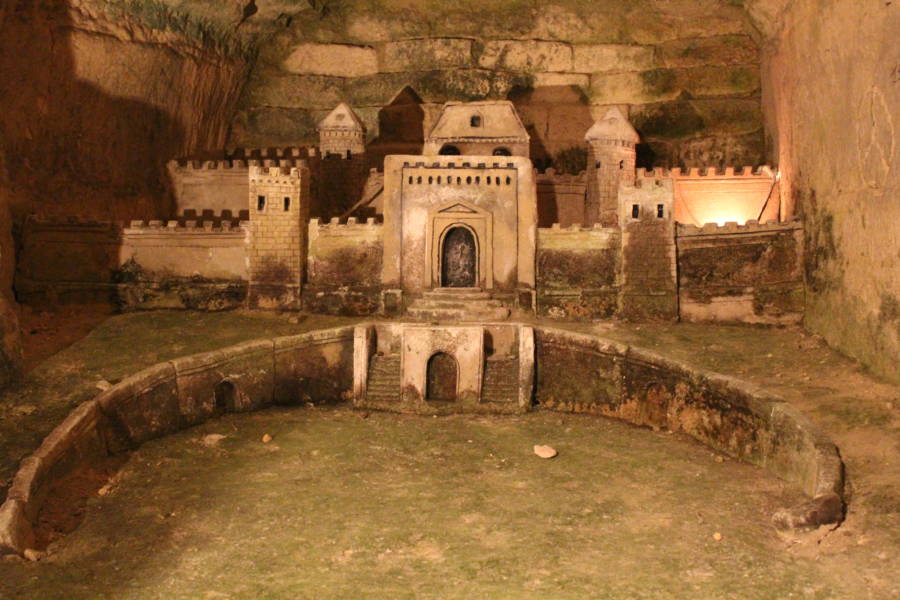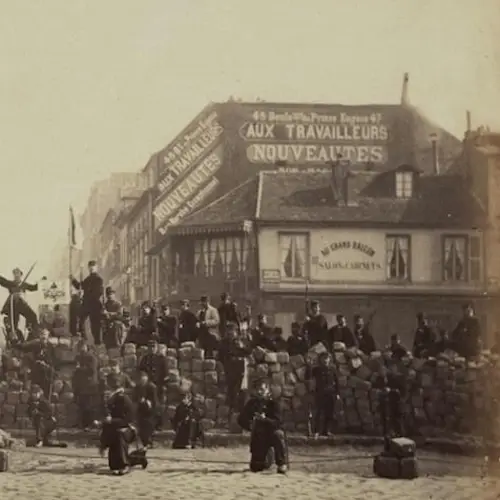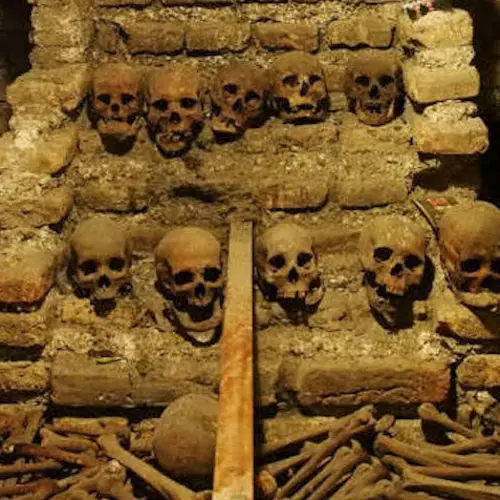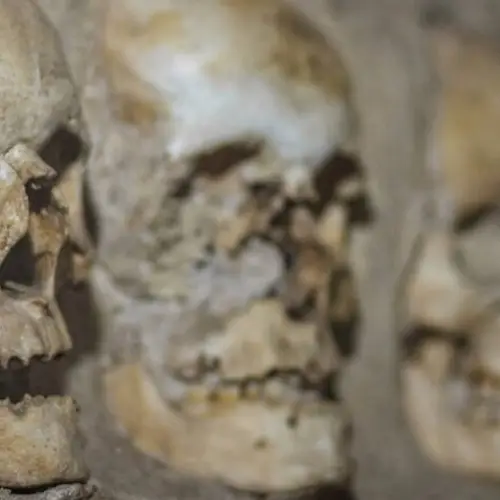Built in the late 18th century in former limestone quarries, the Paris Catacombs house the bones of more than six million people.
Millions of people travel to Paris every year. With the Eiffel Tower, the Arc de Triomphe, and the Louvre, the French capital boasts some of the most recognizable landmarks in the world. But many tourists also make the time to visit the City of Light’s darkest corners: the Paris Catacombs.
Five stories beneath the bustling streets lie the bones of 6 million Parisians, housed in long, winding tunnels.
Though these tunnels were once used as limestone quarries, they were repurposed as graves in the late 18th century when the city began running out of places to bury the dead. By the early 19th century, they had already opened up to the public by appointment.
Today, visitors can purchase tickets to explore a small portion of the Paris Catacombs, one of the largest ossuaries in the world. Take a look at some of the most striking photos of the “Empire of Death” in the photo gallery below, and then learn more about the history behind this famous crypt.
The Creation Of The Paris Catacombs
The Paris Catacombs are a 200-mile-long ossuary, a final resting place for skeletal remains. Though some ossuaries only consist of a box or a single room, the catacombs in the French capital make up a true labyrinth.
The underground tunnels of the catacombs hold the skulls and bones of more than 6 million people, some of whom died over 1,000 years ago. Though the crypt may seem unnecessarily macabre to some modern-day viewers, the reasons behind the ossuary's existence are quite practical.
Back in the late 18th century, authorities in Paris realized that they were running out of places to bury their dead following a large population boom in the city. According to the Smithsonian Magazine, the problem could no longer be ignored when heavy rains caused the wall of one cemetery to collapse, leading to corpses flooding into the surrounding area.
By 1786, authorities had decided to move many of the skeletal remains in overcrowded cemeteries to a pre-existing underground tunnel system.

Scott Stulberg/Alamy Stock PhotoA close-up photo of skulls in the Catacombs of Paris.
The tunnels beneath the city, built in the 13th century, were originally used as limestone quarries to help develop Paris into a booming metropolis. Over the years, workers extracted enough resources from the quarries and eventually left them abandoned. Their emptiness later presented the perfect solution to the ongoing problem of the city's overflowing cemeteries.
Over a period of 12 years, workers lugged the bones of more than 6 million people out of cemeteries and into the catacombs. Interestingly enough, some of the skeletal remains moved to the crypt once belonged to notable figures from French history, including the painter Simon Vouet, the architect Salomon de Brosse, and the writer Jean de La Fontaine.
In the early days of the Paris Catacombs, they were far less organized than we recognize them to be today. In some places, workers simply piled up bones wherever they found the space. And during the French Revolution, some recently deceased people were buried directly into the catacombs. Still, members of the public were able to visit the ossuary by appointment if they were interested in seeing the bones — and many people were.
By the late 19th century, the city had stopped burying people in the catacombs, but that didn't mean that public interest in the massive ossuary had waned. In fact, the Paris Catacombs would eventually become one of the city's most popular — and unusual — tourist attractions.
The Paris Catacombs In Modern History
Though the Paris Catacombs had technically been open to the public since 1809, the earliest guests had to make appointments in order to enter. Throughout the 19th century, the arrangements for visiting were constantly changing, according to the official Les Catacombes de Paris website.
Unfortunately, the first visitors saw what amounted to a disorganized bone depository. Many of the skeletal remains were strewn about haphazardly until a man came to provide some more dignity to the bones.
Louis-Étienne Héricart de Thury, the director of the Paris Mine Inspection Service in the early 19th century, renovated the catacombs so the bones would be more organized. Héricart de Thury also created plaques bearing information about the catacombs as well as safety warnings.
Considering the tragic death of Paris Catacombs visitor Philibert Aspairt, a hospital doorkeeper who got lost in the ossuary during the French Revolution and died there, it's little wonder why warnings were needed. Despite the warnings, however, the extensive network of tunnels still led to sad outcomes for a handful of ill-prepared visitors.
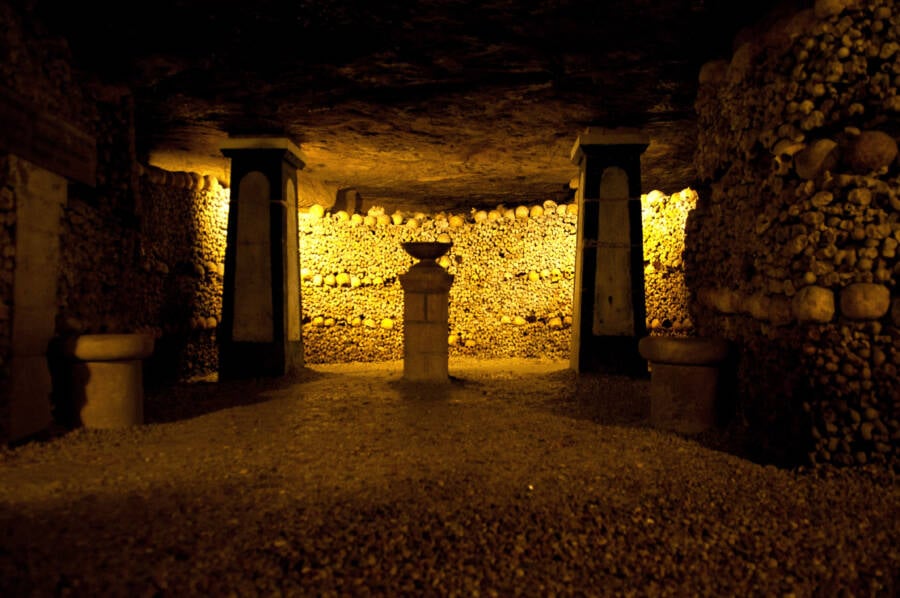
Andia/Alamy Stock PhotoHuman bones cover this wall in the Catacombs of Paris from the floor to the ceiling.
That said, there are also positive stories of people using the Paris Catacombs to their advantage. Perhaps most famously, in the 1940s, when Nazi forces occupied Paris, some members of the French Resistance used the catacombs as places to meet and plot against the invading enemy.
Though the city has closed and reopened the catacombs several times throughout modern history, residents and visitors alike have remained enthralled by the crypt. This remains the case even in recent years.
Today, prospective guests interested in visiting the Paris Catacombs can purchase timed tickets from the official Les Catacombes de Paris website, with ticket prices starting at €10. The tour takes about 45 minutes to complete and only covers about a mile of the 200-mile-long ossuary.
In fact, it's actually illegal to explore most of the tunnels, as the risks of getting lost or injured are high. But much to the dismay of the French government, people have still gone missing in the catacombs. In 2017, two teenagers entered an off-limits area and got lost for three days. They were eventually rescued but had to go to the hospital for hypothermia.
So, before you gear up to do some exploring of your own in the Catacombs of Paris, heed the cautionary tales of those who came before you — and venture into the "Empire of Death" at your own peril.
Next, learn about how thieves in Paris drilled through these same catacombs to steal $300,000 in wine. Then, check out these images from the Catacombs Nightclub of the 1940s that tried to recreate the macabre environment of the Parisian tunnels in Columbus, Ohio.
